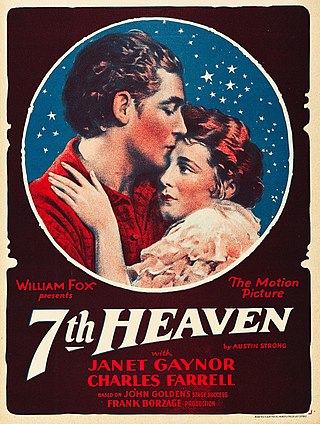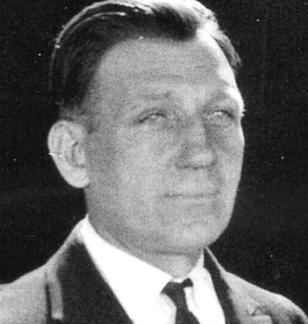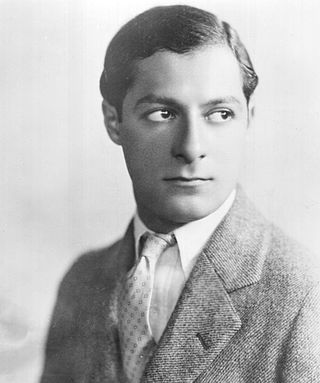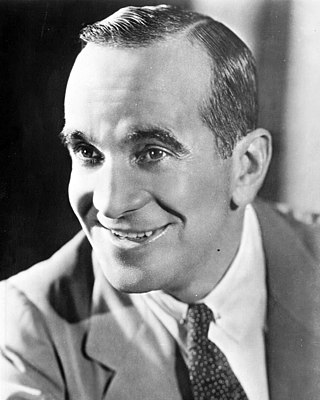
7th Heaven is a 1927 American synchronized sound romantic drama directed by Frank Borzage, and starring Janet Gaynor and Charles Farrell. While the film has no audible dialog, it was released with a synchronized musical score with sound effects using the Movietone sound system. The film is based upon the 1922 play Seventh Heaven, by Austin Strong and was adapted for the screen by Benjamin Glazer. 7th Heaven was initially released as a standard silent film in May 1927. On September 10, 1927, Fox Film Corporation re-released the film with a synchronized Movietone soundtrack with a musical score and sound effects.

The Jazz Singer is a 1927 American part-talkie musical drama film directed by Alan Crosland and produced by Warner Bros. Pictures. It is the first feature-length motion picture with both synchronized recorded music and lip-synchronous singing and speech. Its release heralded the commercial ascendance of sound films and effectively marked the end of the silent film era with the Vitaphone sound-on-disc system, featuring six songs performed by Al Jolson. Based on the 1925 play of the same title by Samson Raphaelson, the plot was adapted from his short story "The Day of Atonement".

A sound film is a motion picture with synchronized sound, or sound technologically coupled to image, as opposed to a silent film. The first known public exhibition of projected sound films took place in Paris in 1900, but decades passed before sound motion pictures became commercially practical. Reliable synchronization was difficult to achieve with the early sound-on-disc systems, and amplification and recording quality were also inadequate. Innovations in sound-on-film led to the first commercial screening of short motion pictures using the technology, which took place in 1923. Before sound-on-film technology became viable, soundtracks for films were commonly played live with organs or pianos.
The following is an overview of 1927 in film, including significant events, a list of films released and notable births and deaths.

Ethel Ruby Keeler was a Canadian-born American actress, dancer, and singer who was paired on-screen with Dick Powell in a string of successful early musicals at Warner Bros., particularly 42nd Street (1933). From 1928 to 1940, she was married to actor and singer Al Jolson. She retired from show business in the 1940s, but made a widely publicized comeback on Broadway in 1971.

Samuel Louis Warner was an American film producer who was the co-founder and chief executive officer of Warner Bros. He established the studio along with his brothers Harry, Albert, and Jack L. Warner. Sam Warner is credited with procuring the technology that enabled Warner Bros. to produce the film industry's first feature-length talking picture, The Jazz Singer. He died in 1927, on the day before the film's enormously successful premiere.

George Albert "Georgie" Jessel was an American actor, singer, songwriter, and film producer. He was famous in his lifetime as a multitalented comedic entertainer, achieving a level of recognition that transcended his limited roles in movies. He was widely known by his nickname, the "Toastmaster General of the United States," for his frequent role as the master of ceremonies at political and entertainment gatherings. Jessel originated the title role in the stage production of The Jazz Singer.

Frederick Alan Crosland was an American stage actor and film director. He is noted for having directed the first feature film using spoken dialogue, The Jazz Singer (1927) and the first feature movie with sychronization soundtrack, Don Juan (1926).

The Singing Fool is a 1928 American sound part-talkie musical drama motion picture directed by Lloyd Bacon which was released by Warner Bros. In addition to sequences with audible dialogue or talking sequences, the film features a synchronized musical score and sound effects along with English intertitles. The soundtrack was recorded using the Vitaphone sound-on-disc system. The film stars Al Jolson and is a follow-up to his previous film, The Jazz Singer. It is credited with helping to cement the popularity of American films of both sound and the musical genre. The film entered the public domain on January 1, 2024.

Samson Raphaelson was an American playwright, screenwriter and fiction writer.
A part-talkie is a sound film that includes at least some "talking sequences" or sections with audible dialogue. The remainder of the film is provided with a synchronized musical score with sound effects. These films more often than not contain a main theme song that is played during key scenes in the film and is often sung offscreen on the musical soundtrack. During the portion without audible dialogue, speaking parts are presented as intertitles—printed text briefly filling the screen—and the soundtrack is used only to supply musical accompaniment and sound effects.

Eduard Franz Schmidt was an American actor of theatre, film and television. Franz portrayed King Ahab in the 1953 biblical low-budget film Sins of Jezebel, Jethro in Cecil B. DeMille's The Ten Commandments (1956), and Jehoam in Henry Koster's The Story of Ruth (1960).

Albert E. Lewis was a Polish-born Broadway and film producer. His family emigrated to the Lower East Side of Manhattan, New York when he was a boy. He became a vaudeville comedian, then started a partnership producing one-act plays for vaudeville. Around 1930 he moved to Hollywood and worked as a film producer with Paramount, RKO, and MGM until after World War II.

Al Jolson was a Lithuanian-born American singer, actor, and vaudevillian.

Sailor Izzy Murphy is a 1927 synchronized sound comedy-drama film released from Warner Bros. Pictures starring George Jessel, Audrey Ferris, Warner Oland and John Milijan. While the film has no audible dialog, it was released with a synchronized musical score with sound effects using the Vitaphone sound-on-disc process. The film was a follow-up to a previous film starring Jessel titled Private Izzy Murphy. The premiere was set for October 8, 1927, at Warners' Theater, two days after the premiere of The Jazz Singer, the first talking film (part-talkie) starring Al Jolson.

Vitaphone Varieties is a series title used for all of Warner Bros.', earliest short film "talkies" of the 1920s, initially made using the Vitaphone sound on disc process before a switch to the sound-on-film format early in the 1930s. These were the first major film studio-backed sound films, initially showcased with the 1926 synchronized scored features Don Juan and The Better 'Ole. Although independent producers like Lee de Forest's Phonofilm were successfully making sound film shorts as early as 1922, they were very limited in their distribution and their audio was generally not as loud and clear in theaters as Vitaphone's. The success of the early Vitaphone shorts, initially filmed only in New York, helped launch the sound revolution in Hollywood.

Lucky Boy is a 1929 American sound part-talkie musical comedy-drama film directed by Norman Taurog and Charles C. Wilson, most notable for starring George Jessel in his first known surviving feature picture. In addition to sequences with audible dialogue or talking sequences, the film features a synchronized musical score, singing and sound effects along with English intertitles. The sound was recorded using the Tiffany-Tone system using RCA Photophone equipment. The film's plot bore strong similarities to that of the hit 1927 film The Jazz Singer, which had originally been intended to star Jessel before Al Jolson took over the role.
George Dewey Washington (1898–1954) was an American singer active in vaudeville and motion pictures from the 1920s through the 1940s. He was a baritone or bass-baritone who often appeared on stage in the guise of "The Gentleman Tramp". He was sometimes compared to Al Jolson.

Jewish Americans have played a significant role in jazz, a music genre created and developed by African Americans. As jazz spread, it developed to encompass many different cultures, and the work of Jewish composers in Tin Pan Alley helped shape the many different sounds that jazz came to incorporate. Tunes by Jewish composers such as George Gershwin, Harold Arlen, Jerome Kern, Richard Rodgers, Irving Berlin and many others predominate among the 'Great American Songbook' compositions that have become jazz standards. Jazz musicians, besides playing renditions of the melodies, often deployed the chord changes of many of these songs to construct their own compositions.

"Dirty Hands, Dirty Face" is a song from the 1921 musical Bombo. The lyrics were written by Grant Clarke and Edgar Leslie; with music by James V. Monaco. Al Jolson is often credited as a lyricist; it was common for popular performers to take a cut of the popularity of a song by being listed as a lyricist. The song is about the love that a father has for his son.

















